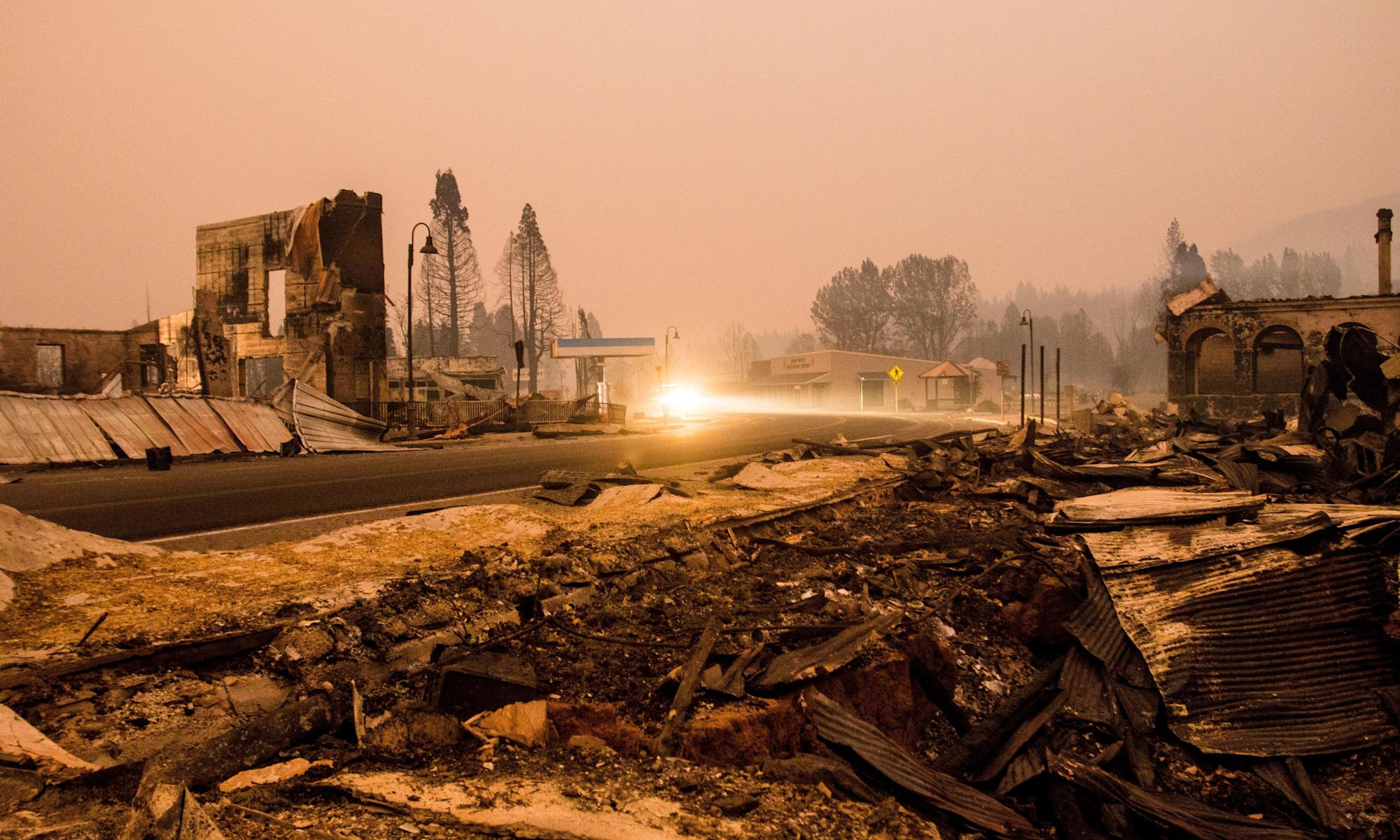Northern California’s raging Dixie fire, the largest wildfire burning in the US, could be spread further and faster by potential thunderstorms, officials warned on Thursday.
The possibility of strong winds of up to 40mph and the chance of lightning threatened to swell the huge blaze and potentially spark new fires.
The Dixie fire, which has become one of the most destructive in California history, has all but leveled the town of Greenville and is still threatening a dozen small towns in the Sierra Nevada, even though its southern end was mostly corralled by fire lines. It has burned more than 790 sq miles (2,046 sq km) and has destroyed more than 1,000 single-family homes since erupting in mid-July. It is 30% contained.
Related: California man charged with killing his children claimed he was ‘enlightened by QAnon’, FBI says
Meteorologist Joe Goudsward said on Thursday morning: “Today we are looking at a change in the pattern. The high pressure is still going to be over us, but we’ve gotten mid-level moisture that we have gone in and put in some thunderstorms into the forecast. We’re warm, we’re dry, we’re unstable. It could be an active afternoon.”
The fire is one of 11 burning across California. Its cause remains under investigation. The utility Pacific Gas & Electric has said the blaze may have been sparked when a tree fell on one of its power lines.
A red flag warning, Cal Fire’s highest alert, was in effect for northern California between Friday afternoon until late Friday evening, because of potential dry lightning. Cal Fire said: “During these times extreme caution is urged by all residents, because a simple spark can cause a major wildfire.”
Meanwhile, a judge on Wednesday denied bail to a former professor from California who authorities accuse of starting the smaller Ranch fire in Lassen county. The man denies setting the fire, according to court documents.
Hot, dry weather throughout the US west is driving flames through more than a dozen states. A wildfire bearing down on rural south-eastern Montana towns on Thursday forced the evacuation of thousands of people.
The Richard Spring fire advanced across Montana’s sparsely populated Northern Cheyenne Indian Reservation, and displayed extreme behavior, according to the National Interagency Fire Center. The blaze, which began on Sunday, spread across 260 sq miles (673 sq km).
By nightfall, the fire had crept within about 2 miles (3.2 km) of the evacuated town of Lame Deer, leaping over a highway where officials had hoped to stop it.
Rancher Jimmy Peppers sat on his horse east of town, watching an orange glow grow near the site of his house.
“I didn’t think it would cross the highway so I didn’t even move my farm equipment,” said Peppers, who spent the afternoon herding his cattle on to a neighbor’s pasture closer to town. “I don’t know if I’ll have a house in the morning.”
By late Wednesday a second fire was closing in on Lame Deer from the west, while the Richard Spring fire raged to the east.
Drought conditions have left trees, grass and brush bone-dry throughout many western states, leaving them ripe for ignition. At the same time, California and some other states were facing flows of monsoonal moisture that were too high to bring rain but could create thunderstorms, bringing new fire risks from dry lightning and erratic winds.
The conditions prompted three national forests to close the Trinity Alps wilderness area, a half-million-acre expanse of granite peaks, lakes and trails, into November.
Scientists have said climate change has made the region much warmer and drier in the past 30 years and will continue to make the weather more extreme and wildfires more frequent and destructive. California’s five largest wildfires in history have all occurred in the last three years, burning more than 2.5m acres and destroying 3,700 structures.
The Dixie fire is second in size to last year’s August Complex fire, in which several smaller fires merged to make one massive conflagration.


